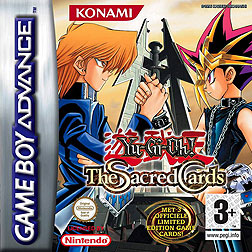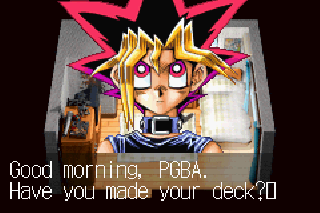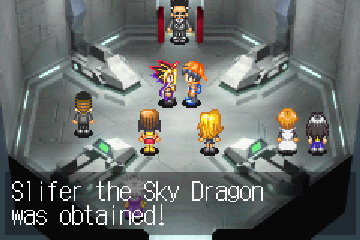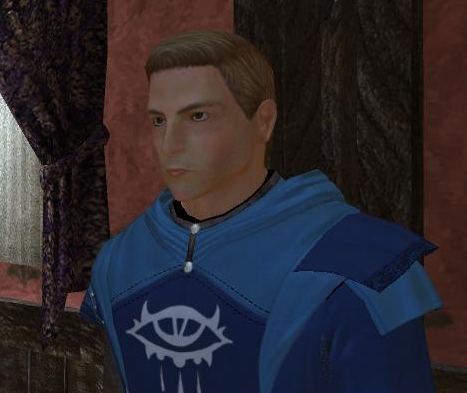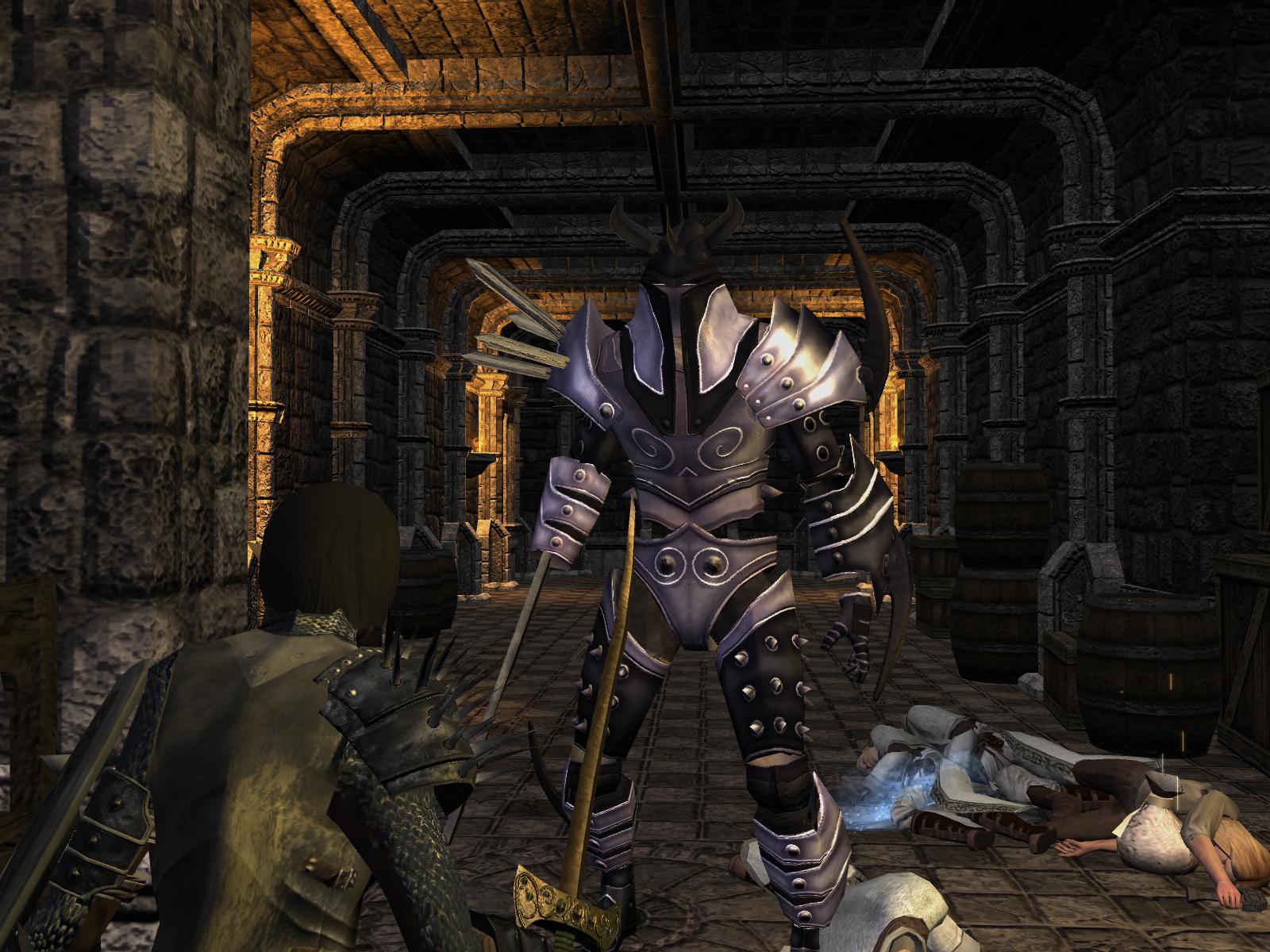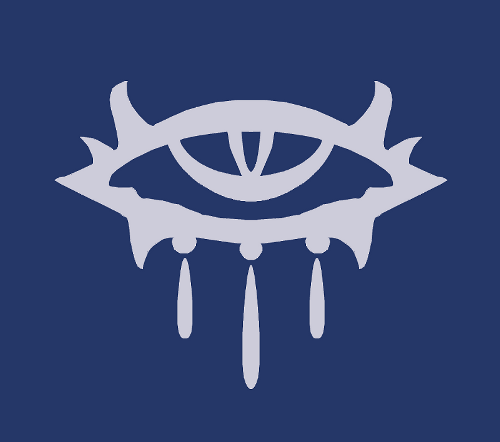Now, I’ve made it no secret that I am a major fan of Bethesda’s Elder Scrolls series. I’ve given praise to both the third entry into it,
Morrowind (which I still hold up as my favorite game of all time), and the fifth entry into it,
Skyrim. However, I haven’t really given its fourth installment,
Oblivion, so much attention as I have the others. And I figured that with the release of
the Elder Scrolls anthology as of about ten days after this review (never let it be said that I'm not timely!), it was a good time to talk about one of the more...tolerated games.
Not to say that
Oblivion is bad, because it by no means is…but it has…problems that neither its predecessor nor its descendent did. That being said, Oblivion also had things unique to it that neither
Morrowind nor
Skyrim had. What did they bring to the table for Oblivion? What did they lose and what did they gain by not following the example of Morrowind? And what was lost in the transition to Skyrim? I’ll leave you all to debate that, but I will go through the features of the game and will occasionally exposit on where they changed something from Morrowind or changed something else for Skyrim and whether or not I think this is a good or bad thing.
We begin in a prison cell in the Imperial City in the province of Tamriel. After you find yourself heckled by a Dunmer in the cell across from you, Captain Picard and a few of his bodyguards make their way into your cell, where the commander of the good ship Enterprise begins to hit on you. In reality, he speaks of your destiny in order to combat a coming darkness. And because Picard is making an escape through your cell, you get a get out of jail free card. It’s often a running joke in the Elder Scrolls series for the player character to start out in prison. As of the time of this review, I believe that only
Daggerfall has not started in such a manner. However, unlike in
Skyrim, there’s no real implication of just why you’ve found yourself in the predicament you’re in.
Although, personally, in
Oblivion I think I was thrown in prison for asking Bethesda to make a better ending to the game.
 |
| No phallic imagery here whatsoever... |
But the Emperor says it truly doesn’t matter what you have been placed in prison for, because you will truly be remembered for saving the world from total destruction. Or, if you don’t care to follow the Main Quest, something else (Because, really, who follows the Main Quest anyway?).
Nevertheless, you follow Picard and his posse out of the cell and into the sewers beneath the Imperial City, where you get your first tastes of the antagonists of the Main Quest – the Mythic Dawn. They fall pretty easily to the Emperor’s elite bodyguards, though they do manage to take out one of them because plot, and you get separated for a time to go through a starter dungeon that just so happens to contain starting equipment for a first level character of almost every sort.
Huh, what a world, right?
While we’re on the subject of my endless and flawless references to the real greatest commanding officer of the Enterprise (not the best Starfleet captain, but that’s a discussion for another time), I remember being really impressed that they’d gotten Patrick Stewart to voice one of their main characters. I remember thinking that it would be great to have him in the game as a mentor figure leading me through how I might defeat the oncoming forces of darkness. Thus, you could imagine my sheer disappointment when he was killed off at the end of the tutorial by…the plot.
And from there, you pick your class and Shawshank Redemption your way out of the prisons, entering the province of Cyrodiil proper and…well, it’s mostly forest with some swamps to the far south east and mountains to the north. Don’t get me wrong, it’s definitely impressive (it is a Bethesda game, after all) but after the truly alien and unique environments we saw in Morrowind, it almost feels like a step back in terms of environment. Now, that’s not to say that Morrowind always had nice, clean and pretty environments. I remember the Ashlands as much as the next person who trekked across the island continent of Vvardenfell, but the fact is that they just didn’t look like the standard western fantasy setting. Very alien and different, so Oblivion loses a few points on falling back on what’s familiar to RPG players instead of giving us something unique.
But hey, you can fast travel through it now and completely ignore your standard western fantasy setting, so who am I to wag a finger?
However, I will give them a few points for the depiction of Mehrunes Dagon’s realm of Oblivion. It is a hellish wasteland, riddled with fire and ash that normally is not accessible to mere mortals such as the player character (in vanilla Oblivion, anyway). However, thanks to the death of Captain Picard, Mehrunes Dagon is able to have his man and mer followers open Oblivion Gates, great towering gates of obsidian stone that release the Daedra hordes under Dagon’s command upon the hapless people of Tamriel, all the while dissolving the walls between his realm and Tamriel.
Never fear, however, as you discover on the Main Quest that the Emperor had a secret son who was hidden away for just such an occasion. Martin, a priest of Akatosh voiced by Sean Bean. And from the actor alone, we really should have seen what was coming. However, when you return to the Grandmaster of the Blades with him (ironically, also hiding out as a monk), you find that the mystical McGuffin known as the Amulet of Kings has been stolen by the Mythic Dawn. Thus, you must not only prevent an invasion from Oblivion, but find a way to recover the Amulet of Kings.
And thus, we have the plotline of the main quest. It pretty much goes as one might expect. You travel to the various towns and close Oblivion gates that open up near them in order to get their aid for a climatic final battle to recover a Great Sigil Stone for a ritual to pursue the leader of the Mythic Dawn. Also, kudos to Bethesda for completely and shameless ripping off Aragorn’s speech from the Battle at the Black Gate from Return of the King. Class act, guys. Class act.
But once you’ve achieved this and are poised to put Martin on the throne, Mehrunes Dagon brings an all-out final assault and Martin ends up sacrificing himself for the greater good to forever seal the barrier between Dagon’s realms and Tamriel…except in Skyrim, he can totally still interact with Tamriel, but never mind that. This ending is particularly irritating because of all the time and effort you’ve spent in keeping Martin safe all ends up being for not. And unlike Harry Potter that followed him, the afterlife doesn’t give Martin a Mulligan, leaving the future of both the Empire and Tamriel as a whole uncertain…until
Skyrim, at least.
 |
| Dragon, Dragon, rock the Dragon...an...ti...climax! |
So what is your thanks? A crappy set of armor. Yeah, thanks, Chancellor Ocato! Next time you need the world saved from an apocalypse, look somewhere else. But really, the ending of Oblivion doesn’t have the feeling of closure that Morrowind’s main quest gave at its end, nor the kind of optimism that Skyrim’s did. In Morrowind, the Nerevarine succeeded in stopping the return of Dagoth Ur to power, saving not only Morrowind but indeed the whole of Tamriel from either destruction or subjugation under the madman demigod’s power. In Skyrim, the Dragonborn did not absorb Alduin’s soul after defeating him, but there was that hinting that one day he might return and if he did, the Dragonborn would be waiting to battle him once again.
But this? It’s basically Bethesda saying, “Oh, hey, thanks for saving Sean Bean all those times. We’re just gonna kill him here, leave the entire Empire in arguably worse shape than it was before all this shit hit the fan.” I’d almost call it mean spirited, because it really kind of is. Granted, good guys don’t always survive their battle against evil (unless you’re in G.I. Joe, apparently), but really, this was just really disappointing after all the work you did to get Martin somewhere safe and protect him the few times you had to battle the forces of evil alongside him.
 |
| "What is the best Oblivion questline?" "This one, my Brother..." |
As for the guild questlines, I really have to tip my hat at the Dark Brotherhood first and foremost. Everything they didn’t do with Skyrim’s Brotherhood, they had done here. They crafted NPCs that were some of the most likeable in the game. When the Ritual of Purification came up, I was in shock. Then again, Bethesda seems to enjoy pulling that card on me, so I don’t know why I’m overly surprised about it. But all in all, especially the hunt for the true traitor to the Dark Brotherhood that wraps up the questline, the Dark Brotherhood questline was my favorite in the entire game, though I am admittedly a bit disappointed that when it wraps up you end up with a desk job within the organization. Something here that Skyrim did better, just because I’m at the top doesn’t mean I don’t want to stick my knife in things (don’t read too hard into that).
Also of high note is the Thieves’ Guild questline. They’re more disconnected than the guild in Morrowind and very finely spread out across the whole of Cyrodiil, but getting to a fence (and there are quite a few) will get any hot merchandise off your hands and you can even have any bounty on you removed for half-price by a Doyen (the quest-givers until the last few missions). Though the earlier questlines take place more in the cities and towns of the province, later on you’ll be working directly for the Gray Fox, the Guildmaster, who will send you all over the map in search of very rare and precious artifacts for his own ends.
The Guild will require you to sell a certain amount of stolen goods in order to get a mission, which is a bit of a throwback to how you advanced in rank in the Guild back in Morrowind, but in a good way. It actually requires you to be a thief rather than just blitzing through the ranks by completing mission objectives all willy-nilly. This will tie into a criticism I have of the Elder Scrolls in general later on, but we’ll get to it when we get to it.
 |
| Modryn Oreyn, one of the few NPCs I find memorable |
The Fighter’s Guild actually has a pretty decent plot. Instead of a criminal organization secretly playing puppeteer for it, we are instead treated to the Guild having some competition in the form of the Blackwood Company. They’re ruthless, efficient, and have many people questioning their motives. So, naturally, you find out over the course of so many missions. It’s a very fun ride and is actually very enjoyable, even if it’s probably the most predictable in terms of plot. The Blackwood Company is mysterious and shadowy and doesn’t seem all that much on the up and up and it turns out…oh, they aren’t. No real shocks, but not too bad as far as it goes.
And now, we come to the questline that I’ve rather been dreading. The Mages’ Guild. Now, there’s nothing really bad about it, per se. See evil wizard, kill evil wizard, save the Mages’ Guild. Pretty much what you would expect and not terrible in its simplicity. And, for once, your Guildmaster is not a complete and utter douchebag, a la Morrowind. No, the problem with the Mages’ Guild questline in its very beginning…when you have to go around to each and every Guild Hall getting a recommendation from each leader. This really just becomes needless and tiresome busywork that opens up a whole mess of side quests in order to get said recommendations. Another area where Morrowind and Skyrim are better, you can just join the Mages’ Guild.
Also, the Big Bad is could almost count as an Anti-Climax boss, which really doesn't give it many points in its favor...
 |
| Behold! The Dark Lord of...wow, really?! |
However, the ability to enchant weapons can only be found within the Mages’ Guild, again another misstep that Oblivion takes that both the game that came before it and the game that came after it did not. I understand the reason why this is, given the current political situation and attitudes towards magic (namely Necromancy as you will be reminded excessively throughout any time at all you spend with the Mages), but from a gameplay stance it’s just rather irritating to have to go around as a hulking barbarian doing quests for mages in order to enchant your normal Iron Battleaxe into Wicked Battleaxe of Decapitation +20. It breaks the immersion somewhat.
But that point brings me to one that I mentioned way back with the Thieves’ Guild. Namely that…well, you really don’t have to have any skill to progress within the Guilds. Certainly, the Thieves’ Guild has the fencing you have to do in order to get other missions, but you don’t have to actually be a thief. You don’t have to improve any skills in order to progress, so it’s kind of awkward when the greatest thief and assassin in the world is only about sixth level. The same goes with the Mages’ Guild, which I think really should be an outright requirement given the nature of Magic. Even so, I do understand why they did this, even if (this time from a storyline standpoint) it makes next to no sense.
You could conceivably become the head of everything with just about any character class. Sure, if you pick a combat class you’ll miss out on a lot of the free gear you get from completing the special requirements of the Dark Brotherhood questlines, but that’s really just about the only hindrance and that’s kind of an issue for me that does actually carry over into Skyrim. You can be the head of every guild and organization and that’s just…well, that’s kind of too much for me. Mixing it up can have people booing and shunning you with your efforts in the Dark Brotherhood, and yet on the other end of the spectrum being cheered on by the populace for preventing the end of the world as we know it. And to be honest, I don’t feel fine…about that.
Morrowind had some restrictions that actually made sense. There were the politics between the Great Houses of Morrowind that prevented the player from joining more than one. There were even politics between the Fighters and Thieves that made it nearly impossible to join both – I say nearly because people have found many a work around for that and always will. But the point is, without going out of your way to learn how, the game was very selective about what you could do and made sure you knew your limits. It made sure you had limits, which is always a way better thing than you think it is (ask any experienced D&D player).
As for the actual
gameplay, it's pretty easy to summarize. Slash enemies with your sword, beat them with your mace, or shoot them with your bows by pulling the right trigger. Magic is literally a button click away. Leveling can only been done when you sleep, but luckily
Oblivion doesn't go the same route as
Morrowind and skip levels if you happen to level up again before you can rest. And beyond that, well, I've covered just about everything short of the several side quests you can find scattered about the world. And, of course, I could go on and on about how all the characters look absolutely
terrible outside of the Argonians and the Khajiit, but everyone's already made those cracks long before now and - let's face the facts - that doesn't do much to ruin the game for me. Though I will say in comparison to
Skyrim, it's rather overall like looking at a matte painting versus a high definition, digitally restored matte painting (which is really ironic during a side quest
in a painting...).
All in all, I do really like Oblivion, but it just doesn’t hold the place in my heart that Morrowind does. Or even, to a lesser degree, the one that Skyrim does. It’s good, but it lacks some features I enjoyed from Morrowind, adds some features that were completely unnecessary that Skyrim wisely left out, and overall has spots in plots that seem almost like they were afterthoughts or just kind of mean-spirited, such as the end of the Main Questline. So, it’s not bad but I’d be very hesitant about giving a recommendation outside of just storyline junkies...even though there's a
considerable disconnect between this and
Skyrim.
As for the game itself, well, there are a few add-ons that I do actually want to give a
little attention too, namely
Knights of the Nine and
The Shivering Isles. So, everybody pack your swords and armor, practice your Restoration spells, and be ready to ask that age old question
"What's a paladin?", because we're heading to do the good work of the Nine in
Knights of the Nine.
"The Elder Scrolls IV: Oblivion" is available for Xbox, PC, and Xbox 360 from Bethesda Softworks, Bethesda Game Studios, and 2K Games.
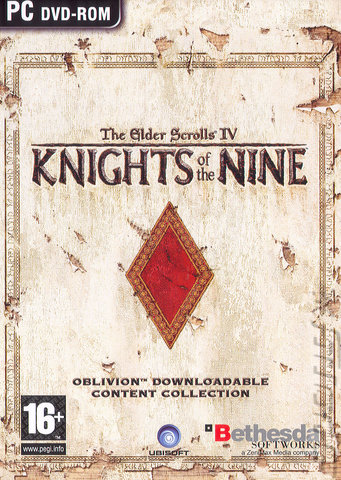 The Nine Divines.
Powerful and absolute deities reigning benevolently over the man and mer
of Tamriel. Akatosh, Mara, Stendarr,
Julianos, Dibella, Kynareth, Arkay, Zenithar, and Talos.
The Nine Divines.
Powerful and absolute deities reigning benevolently over the man and mer
of Tamriel. Akatosh, Mara, Stendarr,
Julianos, Dibella, Kynareth, Arkay, Zenithar, and Talos. 







